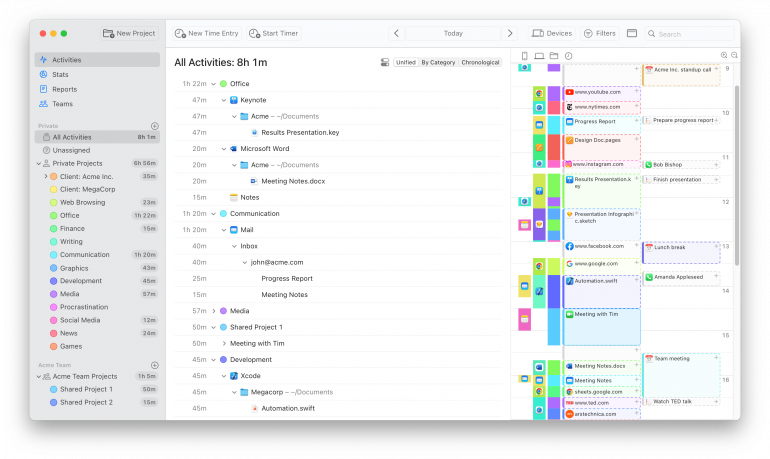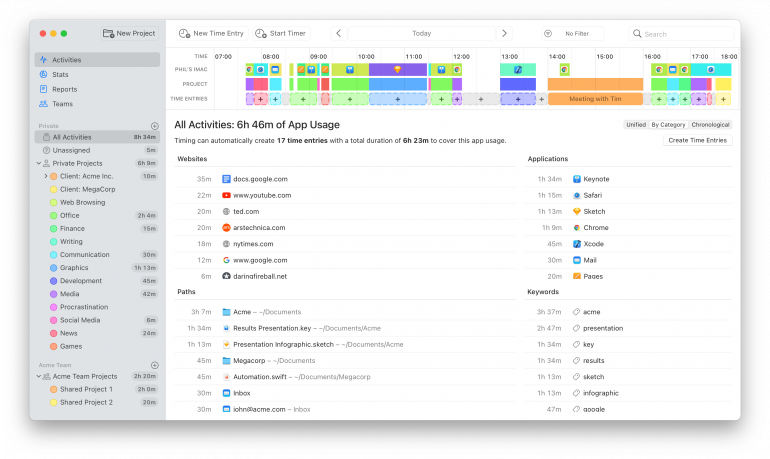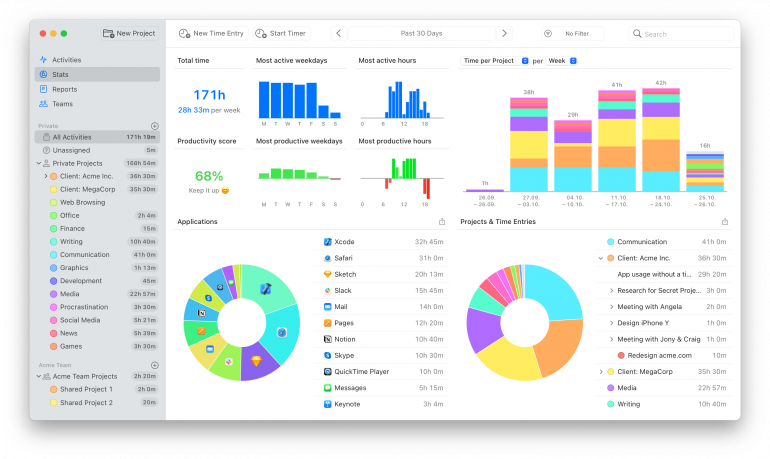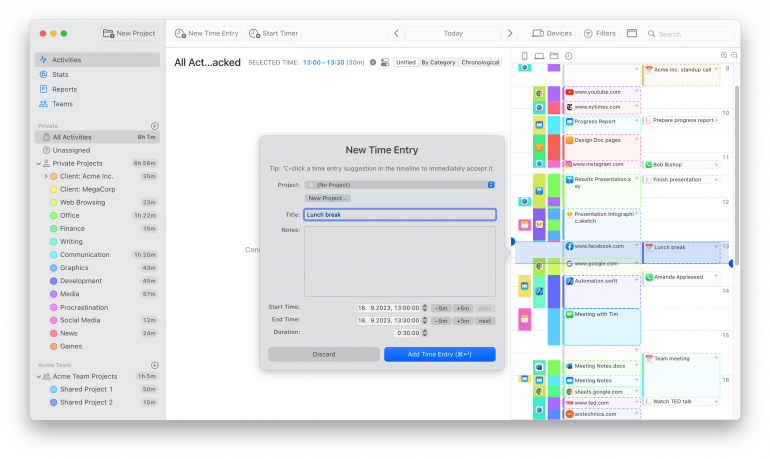How a Block Schedule Can Improve Your Focus, Productivity and Work Satisfaction

Image: fauxels
In our working lives, time reigns supreme. We’re governed by our priorities and by what we can reasonably accomplish on any given day. But working to the best of our ability with the time available to us doesn’t happen by chance. Instead, we need to have an effective time management technique in place if we’re going to maximize every hour and minute. One of the most productive solutions available is the block schedule.
Block scheduling involves dividing your day into broad but distinct blocks of time. Each of these blocks is then dedicated to certain types of tasks. The idea is that, rather than multitasking or haphazardly jumping between projects, you allocate dedicated time to different responsibilities. This helps you stay focused, boosts your productivity, and improves your work satisfaction.
While block scheduling is similar to time blocking, there are some important differences — we’ll explore these in a minute.
Table of Contents
What is a Block Schedule?
A block schedule is a time management strategy that helps you structure your day into blocks of time dedicated to distinct areas of your work and life. If you tend to switch quickly between tasks, get distracted easily, or battle to do deep, focused work, a block schedule can help you stay on track.
By organizing your day into structured blocks, you’re forced to examine your priorities closely, and set aside time to work on those that are the most important. It’s best to plan these tasks around your most productive hours — an automatic time tracking tool like Timing can help you here. The next step is to organize your schedule by blocking out your time, while making allocations for work breaks and personal time, too.
Monitoring your efficiency and productivity over time can help you to assess how well this approach is working for you. Everyone manages their time a little differently, and it’s important you find the right solution.
Time Blocking vs Block Scheduling
Since they’re so closely related, it’s worth taking a moment to compare block scheduling and time blocking. While both are time management techniques that involve allocating specific blocks of time for various tasks or activities, they do have some differences. Which one you prefer will depend on your personal preferences and needs.
Time Blocking
Let’s take a look at some of the key features of time blocking:
- Time blocking involves breaking your day into distinct time intervals — 30 minutes, an hour, two hours — and assigning each block to a particular task, project, or activity.
- These blocks can be highly detailed and specific, allowing you to plan your day down to the minute.
- Time blocking is often used by people who prefer a structured and detailed approach to managing their time. It can be particularly effective for freelancers and small teams who are struggling to manage busy schedules and multiple responsibilities. Elon Musk and Bill Gates are among its most famous proponents.
Block Scheduling
Block scheduling, on the other hand, is a slightly broader concept:
- It refers to organizing your day or week into larger blocks of time, usually focusing on general categories of activities or tasks. You don’t necessarily need to specify the individual tasks you’ll be completing within those blocks.
- You may categorize your day into blocks like “emailing”, “morning work”, “afternoon meetings”, or “evening personal time”, for example.
- Because it’s less prescriptive, a block schedule provides flexibility within each block. As a result, it’s easier to adapt and choose tasks based on your priorities and energy levels.
A block schedule is often used by people who prefer a more adaptable approach to time management than what time blocking permits. In fact, time blocking’s inflexibility is often regarded as one of its greatest pitfalls. Even people who advocate for time blocking warn that adhering to it too strictly can be frustrating and limiting.
You might ultimately find that you enjoy a combination of both. While most days require a bit of flexibility for unexpected deadlines or meetings, you may also choose to set aside some detailed time to work on a particular project.

Image: Andrea Piacquadio
The Benefits of Block Scheduling
Introducing a block schedule into your approach to time management is likely to have several important benefits.
Provides Structure
A gas expands to fill the space available to it. Tragically, all too often, so does our work. If we give ourselves too much time to complete a certain project or task, we’re likely to use all that time — possibly even more. This can be a stressful experience.
If, on the other hand, we’re unrealistic about how long a task will take, and find ourselves battling to finish it within the time we’ve given ourselves, we’re likely to feel similarly anxious.
Block scheduling provides structure. It helps us to focus for the time we’ve set aside, ensuring that nothing gets in the way. Using a time tracking tool like Timing can help you keep track of the time you spend on each project accurately.
Timing’s Activities screen below, for example, tells us this person spent almost an hour and a half on their emails on this particular day. Blocking out this time every day might help them to get through their correspondence, while limiting the disruptions emails can cause at other times of the day.

Grants Flexibility
We’ve touched on this already but it’s worth emphasizing again. A block schedule doesn’t ask you to micromanage every minute of your day. It’s a guideline. Your “working time” can be anything from a major project to several small deadlines — you decide. And your “afternoon meetings” can fall away completely if they get canceled, and replaced with “personal time” instead.
Timing’s Activities tab is also useful here. Even if you do work on a couple of tasks during your blocked-out working hours, it’ll tell you exactly how much time you’ve spent on each project. Because Timing works in the background while you work, there’s no need to start or stop a timer. It simply keeps track of every app, website or document you open.

And speaking of personal time — a block schedule isn’t just for your work. Use it to carve out time for yourself, too. Time to exercise, time to meditate, time to spend with friends and family. You simply can’t work constantly. Your health, happiness, and even your levels of productivity depend on a good work-life balance.
Minimizes Distractions and Promotes Deep Work
Block scheduling is also fundamentally designed to limit distractions and encourage deep concentration.
In this way, it’s very similar to time blocking. The productivity expert Cal Newport, author of Deep Work: Rules for Focused Success in a Distracted World, is a big advocate for time blocking. Partly because setting aside dedicated time to work on something specific allows you to do deep work. This refers to the mentally demanding activities that are at the heart of what you do.
Failing to give your deep work your full attention means your final output may be poor. Or it could take you longer than you’d hoped. Time blocking — and here, it overlaps well with block scheduling — gives you the chance to do this important work well.
Types of Block Schedules
There are several different types of block scheduling. The option you choose usually depends on the nature of your work, and your personal preferences.
Fixed Block Schedule
This is the most rigid option available. It’s ideal for routine-based tasks and daily habits. You might find it especially useful to start or end your day with certain fixed blocks. Perhaps you like setting aside time to journal in the morning, for example. Or check your emails every day between 8am and 8:30am. Or be with your family between 5pm and your kids’ bedtime at 8pm.
Putting this in as a fixed part of your schedule can help you stay accountable.
Of course, if your days are very predictable — and you have strict times when you consult and when you work — you could make your whole schedule fixed.
Flexible Block Schedule
A flexible block schedule allows you the freedom to adjust the timing and duration of your blocks depending on your needs and circumstances. If you work in a creative field — as a web developer, designer or copywriter, for example — you’ll be all too familiar with deadlines shifting. What’s a priority in the morning isn’t always still a priority by midday.
A flexible block schedule allows for greater adaptability and customization. Be conscious, however, of the adjustments you make. Ensure that you’re not letting important priorities fall by the wayside. Setting and maintaining strong work boundaries is important here.
Thematic Block Schedule
This type of block schedule helps you organize your blocks, or even whole days, based on different themes. Monday and Wednesday mornings could be your dedicated meeting times, for instance. You may go so far as to refuse meetings outside of these times. Tuesdays could be dedicated to deep work, and Fridays to your personal creative projects.
This type of scheduling allows you to immerse yourself in specific types of work on designated days, which can help reduce context switching.
Energy-Based Block Schedule
Energy-based block scheduling takes into account your natural energy and productivity levels throughout the day.
If your Timing Stats tab tells you that your most productive days are Tuesdays to Thursdays in the late morning and early afternoon, then block time for intensive tasks during those hours. Your early mornings and late afternoons can be used for so-called “shallow work”. (Another Newport phrase, it refers to the relatively easy or administrative tasks that are the opposite of deep work.)

Hybrid Block Schedule
Generally, many people opt for a combination of two or more of the types we’ve listed above. Some parts of our work require a little rigidity, some a bit of flexibility. Some thematic structuring can help you to complete specific tasks. And being aware of your energy levels is likely to boost your chances of achieving great results.
The type of block schedule you choose should align with your goals, work style, and daily routine. Experiment with different approaches to find what suits you, and be willing to adjust your method to optimize your productivity and sense of well-being.
How to Create a Block Schedule
OK, let’s get into the practicalities of creating a block schedule with this step-by-step guide.
Step 1: Establish a List of Priorities
Start by ranking the items on your to-do list from most to least important. Some might be important because they’re due first. Or because they’re worth more financially. Some projects might be a priority because you’re hoping to impress a new client. Assess each item and plot when you plan to do them that day, or that week. Don’t forget to include your administrative tasks and personal priorities, too.
Step 2: Plot Your Productivity
As we said above, Timing plots your productivity for you. It’s also able to measure how much your on-task productivity increases during your work blocks, as opposed to less focused times. You have a higher chance of getting important work done — well and efficiently — if you try to do it when your brain is firing on all cylinders. Blocking off time for deep work and time for shallow work should be a part of every week’s activities.
Step 3: Block Out Your Time
It’s time to start scheduling your time. Remember that these blocks don’t need to be as detailed as they might be for a time blocking schedule, where you might account for every 15 or 30 minutes. You can block off whole days if you wish, or divide your days into halves or thirds. Don’t forget to include some work breaks though. They’re critical for helping you reduce your stress levels, retain information, make better decisions, and be creative.
Step 4: Account for Your Personal Time
Your personal commitments to yourself matter. By scheduling them in, you’re more likely to take the personal time you need to feel balanced and happy. It may even help to boost your work satisfaction. Try to be as uncompromising as you can about the time you set aside for self-care, exercise, and others.
Step 5: Say No to Distractions
Your blocked-off time is only useful if you truly use it to stay focused. This means minimizing distractions. Help yourself by putting your phone on airplane mode, turning off email notifications, using noise-canceling headphones, or closing your office door (if you have one). Certain tools like Focus can help you block distracting apps.
Step 6: Assess and Review
Take a moment at the end of each day to assess whether today’s plan worked, and whether tomorrow’s still seems feasible. Timing’s detailed and accurate insights are valuable here, too. You might need to move a few things around — adding extra time for meetings, or more time to work on a deadline that has broadened in scope. Newport recommends taking 20 minutes every evening to plan the next workday.

Image: fauxels
Maximizing Your Productivity with Timing
Integrating your block scheduling habits with Timing offers the best of both worlds. The flexibility to block off sections of time as you choose every day. And the level of detail you need in order to know how much time you’ve spent on every project during those blocks.
Here are some of the key Timing features you’re likely to find useful:

- Timing’s calendar integration functionality allows you to bring all your blocked hours into Timing as color-coded blocks. This will help you to see exactly how closely you’re adhering to your proposed schedule, and whether you’re veering off course. Use this info to make adjustments.
- By automatically tracking all the work you do, Timing can help you allocate time accurately to your different projects. This is especially important for accurate quoting and invoicing. Blocking off your time won’t tell you exactly how much time you spent on a project. But Timing will.
- Being able to enter time entries manually can help you to stay on top of activities that fall within a certain block but might not be in front of your laptop. An in-person work meeting is still a meeting (and still billable).
- Timing’s phone call and Screen Time integrations can give you a sense of whether your time blocks are really as distraction-free as you would like them to be. While some time on your phone might be work-related, it’s worth knowing how many hours are being absorbed by your news and social media feeds.
Block Schedule Challenges and Solutions
Like any time management strategy, block scheduling can take a bit of getting used to. Here are some of the most common challenges you might encounter — and how to solve them:
- Over or underestimating your time: Initially, you might battle to gauge how much time you need for certain projects or tasks. Address this by keeping an eye on your Timing reports over a period of time. Observing these trends may help you to estimate your blocks better.
- Lack of flexibility: While block scheduling is more flexible than time blocking, it’s more restrictive than other, more ad hoc time management methods. Give yourself some breathing room for unexpected tasks and review and adjust your schedule regularly.
- Difficulty maintaining focus: It’s important that you find ways to minimize distractions that work for you. You may need to find a quiet workplace, integrate mindfulness practices into your life, or try using various productivity tools. You can read more about the 14 Best Mac Productivity Apps in 2024 here.
- Poor planning: Not planning carefully can undermine the effectiveness of block scheduling. Don’t forget to set clear goals and priorities. And to be realistic about what you can achieve in any period of time.
It takes a little practice and perseverance, and a willingness to experiment. But improving your focus, productivity and your work satisfaction makes it all worthwhile.
Block Schedule: The Final Word
Block scheduling can help you to stay focused on important work, complete it efficiently, and move onto the next task with energy to spare. Because you feel more in control of your time, it’s also likely to reduce stress and improve your work-life balance.
Start by integrating Timing into your work, so that you can see when you’re most productive and get an accurate view of how you spend your time. Use this information to build your first block schedule. Then, keep an eye on the data Timing produces so that you know what you’re working on during your blocks.
Sign up for Timing’s free 30-day trial to seamlessly integrate block scheduling into your daily routine today.
Block Schedule: Frequently Asked Questions
What is a Block Schedule at Work?
A block schedule at work is a time management strategy that helps you structure your day into blocks of time dedicated to certain types of tasks.
How Can a Block Schedule be Adapted to Different Types of Work or Projects?
You may choose to adapt to use a fixed, flexible, thematic, energy-based or hybrid block structure. There are options available to you depending on how you work.
What is an Example of a Block Schedule?
A block schedule might include dedicated time for “work”, “meetings” and “personal time”. Incorporating breaks can help you achieve a better work-life balance.
Are There Tools or Apps that can Assist with a Block Schedule?
A critical tool in implementing an effective block schedule is an automatic time tracking tool like Timing. With Timing, you can identify your most productive hours, and structure your schedule accordingly.
